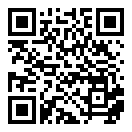Pages:
7-26
Receive Date: 2025/12/01
Accept Date: 2025/12/01
Abstract:
As the basis for the formation of a set of relationships in humans’ lives, the need for relationship is inherent in man. The regulation of these relationships has an effective role in the individual and social mental health of humans, and the religion of Islam has a special viewpoint on this field. The purpose of this research is to explain the pattern and organization of interpersonal communication based on Islamic sources. "Content conceptual analysis" method has been used in this research. Also, the content validity index (CVI) was used to confirm the validity of the inference based on the opinion of ten experts. The findings showed that the Islamic interpersonal communication model is based on communicative rationality, in the sense that the structural components of "goodness" and "refraining from ill-treatment", the maintenance components of "giving good-tidings" and "praise" and the reconstruction components of the relationship between "asking for forgiveness" and "forbearance-forgiveness" are used together as a set. The obtained CVI and CVR were equal to 1 (one), which indicates the correctness of inferring the four communication situations from the base narrative at a completely favorable level.
چکیده و کلیدواژه فارسی (Persian)
Title :تبیین الگوی ارتباط بینفردی براساس منابع اسلامی
Abstract:
نیاز به رابطه، نیازی ذاتی در انسان هاست که زمینه ساز شکل گیری مجموعه ای از روابط در زندگی آنها می باشد. تنظیم این روابط نقش مؤثری در سلامت روانی فردی و اجتماعی انسان ها دارد و دین اسلام در این زمینه دارای نگاه ویژه ای است. هدف پژوهش حاضر تبیین الگوی ارتباط بین فردی براساس منابع اسلامی برای سازمان دهی ارتباطات بین فردی است. در این پژوهش، از روش «تحلیل مفهومی محتوایی» استفاده شد. همچنین از شاخص «روایی محتوا» (CVI) به منظور تأیید روایی استنباط به عمل آمده مبتنی بر نظر ده کارشناس خبره استفاده گردید. یافته ها نشان داد الگوی ارتباط بین فردی اسلامی مبتنی بر عقل ورزی ارتباطی است؛ به این معنا که در آن، مؤلفه های ساختی «احسان » و «پرهیز از اسائه»، مؤلفه های نگهداری «استبشار» و «شکر» و مؤلفه های بازساختی ارتباط «استغفار» و «بردباری ـ غفران» به صورت مجموعه ای و باهم به کار گرفته می شوند. هرکدام از CVI و CVR به دست آمده نیز 1 (یک) بود که نشان دهنده صحت استنباط چهار موقعیت ارتباطی از روایت مبنا در حد کاملاً مطلوب است.
Cite this article:
RIS
Mendeley
BibTeX
APA
MLA
HARVARD
VANCOUVER
APA | MLA | HARVARD | VANCOUVER
Sadeghi Seresht , Ali, Mirderikvandi, Rahim, Aqebati, Asmaa, Rafieihonar, Hamid.(2025) An Explanation of the Interpersonal Communication Pattern Based on Islamic Sources. Ravanshenasi Wa Din, 15(3), 7-26
APA | MLA | HARVARD | VANCOUVER
Ali Sadeghi Seresht ; Rahim Mirderikvandi; Asmaa Aqebati; Hamid Rafieihonar."An Explanation of the Interpersonal Communication Pattern Based on Islamic Sources". Ravanshenasi Wa Din, 15, 3, 2025, 7-26
APA | MLA | HARVARD | VANCOUVER
Sadeghi Seresht , A, Mirderikvandi, R, Aqebati, A, Rafieihonar, H.(2025) 'An Explanation of the Interpersonal Communication Pattern Based on Islamic Sources', Ravanshenasi Wa Din, 15(3), pp. 7-26
APA | MLA | HARVARD | VANCOUVER
Sadeghi Seresht , A, Mirderikvandi, R, Aqebati, A, Rafieihonar, H. An Explanation of the Interpersonal Communication Pattern Based on Islamic Sources. Ravanshenasi Wa Din, 2025; 15(3): 7-26
 / Assistant Professor of Psychology, the Qur'an and Hadith Research Institute / sad13566@gmail.com
/ Assistant Professor of Psychology, the Qur'an and Hadith Research Institute / sad13566@gmail.com / Assistant Professor of Psychology, the Imam Khomeini Institute for Education and Research / mirdirikvandi@iki.ac.ir
/ Assistant Professor of Psychology, the Imam Khomeini Institute for Education and Research / mirdirikvandi@iki.ac.ir / Assistant Professor, Department of Clinical Psychology, Tehran University of Medical Sciences / aghebati@iums.ac.ir
/ Assistant Professor, Department of Clinical Psychology, Tehran University of Medical Sciences / aghebati@iums.ac.ir / Assistant Professor of Ethics, Islamic Science and Culture Research Institute / h.rafiee@isca.ac.ir
/ Assistant Professor of Ethics, Islamic Science and Culture Research Institute / h.rafiee@isca.ac.ir



